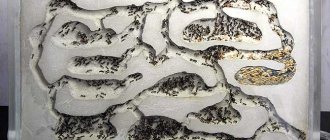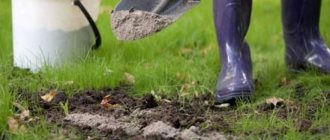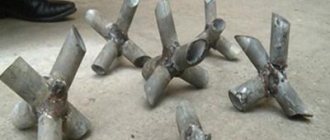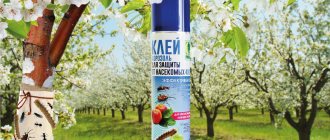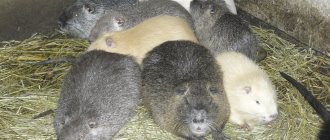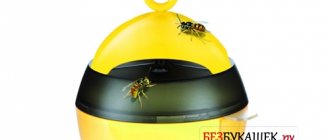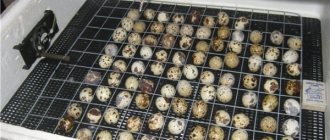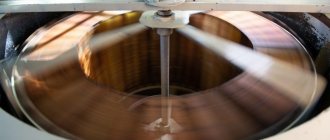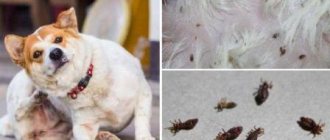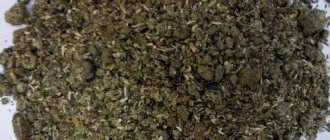Have ants as pets, but don't know how to properly care for these insects? How can a beginner provide an artificial anthill with everything necessary and create favorable conditions for the development of the colony? We will help!
To keep your formicarium full of life, it is important to consider a number of aspects:
- nutrition;
- life support;
- maintaining suitable conditions;
- insect care.
All of these are important factors on which the life of your colony directly depends.
First Settlers
When you have made your first arthropod friends, you should address the housing issue. For comfortable living, the colony must correspond to the size of the ant farm. If there is not enough space, the ants may die, and if there is a large amount of unused territory, they may collect garbage and food debris there.
Once settled, ants may behave unnaturally
– hide, do not communicate with each other, refuse food or water. This is fine. Full acclimatization takes time.
After settlement, there should be free cells left - the colony will develop and will need more space.
Watch a video on how to properly populate an ant farm:
Food delivery
Although anthills do not require constant monitoring, it is necessary to provide insects with food. Even beginners can handle this - just remove the lid and add food.
Food directly depends on the type of insect
. Some prefer other insects (mosquitoes, mealworms, crickets), others feed on plant foods.
For feeding, either small portions that are easy to consume immediately on the spot (for example, bread crumbs) or whole pieces that are difficult to carry into other compartments are suitable. Do not give insects excess food - the leftover food will simply rot and become moldy.
Also don't forget about water. Depending on the type of farm, the liquid is poured into special drinking bowls
or spreads throughout the anthill itself. Without water, the colony will die from dehydration.
Hydration
For the comfortable existence of ants, it is necessary to maintain the level of humidity. For humidification, special chambers are provided (in small ones - 1, in large ones - 2 or 3), they must be filled with water. To correctly calculate the fluid level, observe the formicarium. With excess humidity, ants are less active and try to hide. If there is insufficient humidification, condensation and water film disappear from the walls.
At first, you need to carefully care for the ant farm; for beginners, humidification chambers located away from the colony are suitable
. This will protect the insects from high humidity at first. If necessary, these arthropods will independently change their place of residence, choosing the optimal rooms.
Care
How to care for the residents on an ant farm and provide the ants with everything they need? This is not difficult - such insects do not require special housing conditions, regular changes in temperature or adjustment of indicators.
What will you need for your farm?
You need two jars with lids - one larger, one smaller (so that the second can fit inside the first). Ants and soil will be placed in the space between the small and large containers. A smaller jar is needed to leave space in the center.
The ants will be able to lay eggs at the top edge and build tunnels, and you will be able to watch this process. Airtight containers are great for “construction”. You can use them to create the desired size of farm. Please note that the jars should not have any patterns, cracks, scratches, etc. If you want your ant farm (with ants) to be flat, buy a small narrow aquarium from your local pet store.
Incubator
With the stable development of the ant family, problems may arise with the supply of food inside the incubator, since curious ants will try to run out at any opportunity to explore the surrounding world, and the most daring, courageous and aggressive individuals may attack, since they will regard the intrusion as a threat to the colony.
Of course, such conditions exclude the possibility of quiet feeding, and it is necessary to expand the formicarium area by connecting an arena.
The arena is a structure that plays the role of space outside the nest. In this territory, the ants will collect food, remove garbage, and study various decorative elements previously placed by you. This option greatly simplifies the process of feeding insects - it is enough to simply place a feeder with a treat (syrup, other types of food insects, seeds) in the arena.
Soil-sand farm
First you should prepare a mixture of sand and soil. Ants require a moist environment. This will allow little residents to dig tunnels and paths. If you collect ants in your dacha or yard, use the same soil so that when they move to a new house, they find themselves in their familiar habitat. You will need enough earth to fill the space in the jar. Loosen it well.
Mix two parts soil with one part sand. You can buy fertilized soil and sand from the gardening department and mix them well. If you buy special ants from a farm at a pet store, then the necessary mixture is included with them.
Homemade formicariums
- Bulk formicarium. This is probably the simplest version of a homemade ant farm. The design is somewhat reminiscent of a window frame. Two glasses of the same size are glued together, leaving a gap of about two centimeters. A substrate of sand and clay is poured into the resulting container. The ants themselves make the transitions and equip separate chambers. This design is not ideal - there is a risk of collapse of tunnels and galleries, and high humidity can cause mold to develop. The ants try to build passages without touching the transparent glass, so part of their life is hidden from view.
- Wooden formicarium. An excellent option for lovers of natural materials and natural aesthetics. To make it, you will have to stock up on a serious set of wood carving tools and carpentry skills. A wooden ant farm beautifully complements the interior, but not all types of ants are suitable for living. In addition, in humid conditions, a wooden formicarium is susceptible to deformation and rotting.
- Gypsum formicarium. Gypsum is an excellent material for making an ant farm. Convenient to manufacture, practical to use. Mix gypsum powder with water and shape into desired size and shape. The frozen mass has good density, while absorbing a certain amount of moisture, and then gradually releasing it to the surrounding space. A humidity gradient is created in a home formicarium. This allows the ants to use the chambers depending on the conditions. Some are for storing supplies, others for raising larvae. Gypsum ant farms do not deform like wooden ones, and the passages in them do not collapse like in sand ones.
Looking for an anthill
Now you need to find “tenants” for your farm. The easiest way to find ants is outside. You will not have any difficulties with this, especially if you involve your child in this process. Small anthills are often found in yards. You can find them if you follow where the little workers are rushing with their finds. When going to collect ants, take with you gloves, a jar with a tight lid and a scoop.
Make several holes in the lid using a needle (for air access). They must be very small so that insects cannot get out. Add some honey or jam to the bottom of the jar. In this case, the ants will gather around the sweet treat and will not try to get out. Very carefully dig up the inhabitants of the anthill and move them to a jar.
Try to find the queen. You will recognize her immediately - she is much larger than the rest of the inhabitants of the anthill. An ant farm, which is populated only by working insects that live on the surface, will last no more than four weeks. This is how long these insects live in natural conditions. A queen ant that is ready to lay eggs can be found near anthills in early autumn, immediately after mating has occurred between males and females. In addition, the queen can be purchased from professional breeders. Your ant farm can accommodate 30-40 insects to start with.
Settlement of residents
After you have purchased and assembled the structure, you need to find residents for the farm.
Where to get ants
There are three options for purchasing insects:
- Catch them in the wild during the season.
- You can buy pets at a pet store throughout the year.
- Buy on specialized web resources.
Important! A fertilized female differs from an unfertilized female by the absence of wings. You can distinguish it from wingless worker ants by its developed chest (due to the remaining flight muscles) and massive abdomen. After mating, the females land, break their wings and look for a place to build a nest
At such a moment you need to catch them, one or several at once.
After mating, the females land, break their wings and look for a place to build a nest. At such a moment, you need to catch them, one or several at once.
Move-in process
A captured queen should not be placed immediately in the nest as she will be difficult to care for. To begin with, it is placed in a regular medical test tube with moist soil, or in a special core filled with soil or plaster. Egg laying begins a few days after summer. The first babies appear after 60-90 days, and the new family can already be fed with carbohydrate and protein food. When the colony has more than 20 individuals, it can be moved to a prepared artificial anthill.
If you still decide to just watch the ants in order to later breed a full-fledged colony, then collect the workers from the anthill and place them in your farm.
There is an easy way to catch ants - lure them into a jar with sweet bait.
Once you bring the insects home, place them in the refrigerator until they become sleepy, about 15 minutes.
After this, carefully move them to the farm, to the arena. Do the same with an ant family bought in a store.
Important! Do not shake ants into the arena, especially pupae, larvae and eggs. This way they can be injured, and the brood will stop developing or be born with defects.. Having placed the incubator in the arena, humidify the farm, darken it and wait until the scouts examine the new housing and report to the queen
After this, she will move from the incubator to the formicarium, and the workers will transfer the brood there. When there is no brood left in the incubator, you can drive out the last adults with light taps.
After placing the incubator in the arena, humidify the farm, darken it and wait until the scouts examine the new housing and report to the queen. After this, she will move from the incubator to the formicarium, and the workers will transfer the brood there. When there is no brood left in the incubator, you can use light tapping to drive out the last adults.
Building a farm
Now you can start building the farm. Cover the smaller jar with a lid and place it in the larger one. To make it stand in the center, you can glue it to the bottom with glue. Fill up with soil. Make sure the lid is closed tightly. Fill the space between the jars with soil and sand mixture. This composition should not be compacted tightly - ants will not be able to move inside.
The soil should not reach about 1.5 cm from the top of the jar. This is necessary so that insects cannot escape when you open the lid. Place the ants in a jar and close it. Do this very carefully. Use a needle to make holes in the lid for air.
Warnings
You should also know what not to do when using formicarium:
- close the lid tightly, insects need air to breathe;
- the holes in the lid for ventilation should be of such a size that pets cannot escape from you;
- do not allow strong cooling, otherwise you will be in sleep mode;
- ants are contraindicated in extreme heat, which will lead to the death of insects;
- do not shake or drop the formicaria;
- do not pour water, the ants cannot swim and will simply die.
In conclusion, let’s say that by creating a formicarium with your own hands, you will make a unique specimen, thanks to which you will be able to observe the life of your unusual pets.
Farm care
We figured out how to make an ant farm. Now you need to find out how to care for it.
- It is necessary to regularly moisten the soil and feed the inhabitants of the farm. Every 3-4 days, throw small pieces of fresh fruit and a few drops of jam or honey into a jar - ants have a sweet tooth, they love sugar very much.
- Ants should not be fed meat or any other cooked foods. Otherwise, your ant farm will attract unwanted insects.
- When you are not observing insects, cover the jar with a light, dark cloth. The fact is that ants dig their tunnels at night, in complete darkness. If this is not done, the insects will be in a constant state of stress and may lose activity.
- Ants are fragile creatures, rough handling can kill them due to tunnel collapse. Therefore, the jar should not be shaken.
- The ant farm (you see the photo in this article) should be located in a warm room (at a constant temperature.
- Do not expose the farm to direct sunlight. The walls of the jar may heat up and the ants will die.
How to choose the right one and how much it costs
What you need to pay attention to when choosing a formicarium:
- arena features;
- humidification system;
- possibility of modifying the design;
- main module type.
Did you know? In a natural anthill there may be not one, but several candidates for the role of the queen. Then they fight among themselves for the title of queen. The ants watching the fights recognize the winner as their queen, and kill the losers.
The ant arena is both a dining room and a waste area, so it should be comfortable.
Convenience criteria:
- The arena must be reliable and easy to maintain.
- The arena must be well ventilated and at the same time prevent the escape of insects.
- For ease of maintenance, the farm should have a convenient lid.
The formicarium must have:
- porous material;
- auto-humidification element - a test tube with a cotton or gauze swab, which is connected to the humidification compartment.
Did you know? Because ants receive information through odors, they are unable to identify a dead body until it begins to decompose, releasing a corresponding odor. Only then is he taken out of the anthill.
The type of the main module is horizontal, vertical or shaped structures, which have already been mentioned above.
Horizontal structures have a large area and shallow chambers, making it possible to clearly observe the life of the colony. True, such formicaria occupy quite a lot of space.
Vertical structures take up little space and can be placed in almost any corner of the room, but due to the large depth of the chamber and the secretiveness of the passages, it is almost impossible to see the entire colony.
If you are no longer interested in such popular pets as cats, dogs and hamsters, perhaps you should get a lemur, squirrel, degu, moose, opossum, manula, capybara, monkey or raccoon.
Curly designs are fraught with various advantages and disadvantages that a beginner will not understand on his own. Therefore, they are recommended only for experienced keepers; a whole article would not be enough to discuss them.
How much does an ant farm cost? The answer to this question depends on the type and size of the formicaria.
| Type | Price, UAH. |
| Acrylic: | |
| horizontal mini | from 200 |
| horizontal large | from 800 |
| vertical mini | from 300 |
| vertical large | from 1500 |
| modular | from 1000 |
| Gel: | |
| small | from 250 |
| big | from 500 |
| Sandy: | |
| horizontal mini module | from 150 |
| vertical mini module | from 300 |
| Wooden: | |
| small | from 800 |
| big | from 1200 |
| Plaster: | |
| "Tower" | from 2500 |
| "Big" | from 3500 |
Did you know? Many types of insects disguise themselves as ants. Some of them imitate aggressive ants for the purpose of protection, while others - for the purpose of hunting the ants themselves, such as anteater spiders that penetrate deep into the anthill.
There are also designs made to order.
Truss with gel filler
The gel ant farm is now sold in stores as a complete set. Of course, such a farm does not include its inhabitants. They must be purchased separately or collected in the yard or in the forest. You can make such a house for ants with your own hands. We assure you that it will be interesting not only for children, but also for adult naturalists to watch how insects dig tunnels, pulling pieces of gel to the surface.
For this you will need:
- flat container with a lid and transparent walls;
- gelatin.
comparison table
For the convenience of readers, I have summarized the main characteristics of all ant farms presented in the rating into a single table. This will allow you to quickly compare the parameters of any two models you like, which will greatly facilitate the choice.
| Model | Material | Layout | Number of ants | Number of humidification chambers | Dimensions |
| Antwill Loft “Tree” | Acrylic | Horizontal | 1350 pcs | 2 pcs | 230x230x60 mm |
| Smart “Tree” | Acrylic | Horizontal | 500 pcs | 1 PC | 165x120x70 mm |
| Antwill Mini “Summer Day” | Acrylic | Horizontal | 500 pcs | 1 PC | 105x180x60 mm |
| "Ecosystem" | Acrylic | Vertical | 6000 pcs | Autonomous system | 250x160x160 mm |
| "Tropics" | Acrylic + plaster | Vertical | 1200 pcs | 2 pcs | 190x170x100 mm |
| AntLabs “Land” Green moss | Acrylic + plaster | Vertical | 1500 pcs | 1 PC | 229x140x120 mm |
Preparing the gel
Pour three sachets of gelatin (15 g each) into 0.5 liters of hot water, stir well until the gelatin is completely dissolved. After this, add another 0.5 liters of water. Pour the finished mixture into a container and place it in the refrigerator. When it hardens, take it out and wait until the gel mass reaches room temperature.
Aquarium gel can be bought ready-made in the store, but it’s more interesting to make it yourself. You should know that such a filler for an ant house is not only a habitat, but also food. As soon as you make a small depression in the gel and place ants in it, they will immediately begin to “eat away” their passages and build tunnels. Let us remind you once again that ants living on a gel farm do not need to be fed or watered. The gel is a source of moisture and food for them.
From plaster
To make a gypsum ant farm with your own hands, you will have to spend more time, because... you need to wait for the material to harden
Required tools and materials
To create a gypsum farm, you will need:
- capacity;
- gypsum mortar;
- water;
- cocktail straw;
- pencil;
- drill;
- stationery knife.
Step-by-step manufacturing instructions
The first step is to prepare a container for diluting gypsum. Mix water and plaster until the consistency of thick sour cream. Next, you need to leave it to harden for 5-7 days. Carefully remove the dried mass from the container. Use a pencil to draw future moves and exits. You can use a utility knife to drill small paths. Place the finished structure in an aquarium or jar of a suitable size. Make holes in the lid to allow air to enter. In order to moisten the ants' habitat and feed them, insert cocktail straws.
Gypsum ant farm
Such a formicarium (also called an ant farm) is attractive because it is completely open to observation of insects.
To create it you will need a transparent container. We dilute the plaster to the consistency of sour cream. Pour the resulting composition into a container, having previously placed a regular plastic tube in it (at the side). It should reach the bottom of the container. This is necessary in order to later add water to the formicarium, which will maintain the humidity level.
After pouring the composition, the workpiece sets very quickly, but dries completely in about a week. On the third or fourth day, remove it from the mold. If it does not come out easily, place it in hot (not boiling) water for thirty seconds. After this, the workpiece will easily come out of the mold.
Now it’s time to show your design abilities, that is, “draw” “rooms and corridors” on the blank. At this time, the composition is still damp, so you can easily scratch out any tunnels on it - it depends on your imagination. Although amateurs who already have an ant farm recommend studying the structure of a real anthill so that the passages are as close as possible to natural ones.
The two entrances for the residents of the formicarium can be drilled using a drill. Now take any convenient tool (stationery knife, screwdriver, etc.) and start making tunnels according to your drawing applied to the workpiece, choosing plaster from them. Do this carefully so that the composition, which has not yet completely dried, does not crumble.
Several depressions should be made at the bottom of the workpiece to better distribute water and moisturize the formicarium. They need to be connected by a small channel to a cocktail tube. Such recesses significantly reduce the weight of the formicarium. Don't forget to make ventilation holes in the top cover and sides. For this you can use a 0.5 mm drill.
Your farm is almost ready. All that remains is to dry it well and place it in a container. Here again you may encounter a problem - the dried workpiece will not want to go back into the mold. Don't be discouraged, but again place it in hot water for 30 seconds and it will easily enter the container.
All that remains is to find ants for the formicarium. There are many types of them, so before purchasing, it is advisable to look through special literature to select the most unpretentious one. After settling the farm, you will be able to study the life of these insects.
Types of formicaria
There are two main designs - vertical and horizontal. Vertical ones take up little space because they are installed on the edge. The moisture inside is distributed unevenly, creating a humidity gradient. This is favorable for the development of some species of ants. The disadvantage is that the viewing glass can quickly become dirty from the inside, as ants move along it carrying food.
Horizontal structures are convenient for observations and photography. The glass located above the cameras hardly gets dirty. However, changes in humidity can cause condensation to form. In addition, such formicaria take up a lot of space and there is no way to create a humidity gradient in them. An arena is easily connected to horizontal structures, into which ants take out garbage and dead relatives.
Gel ant farm
Many modern formicariums contain gel filler. In appearance, they most closely resemble aquariums due to the transparent blue gel. This filler is non-toxic and safe for insects and people. Care involves lifting the lid every few days to ventilate and remove dead insects from the surface of the gel, where their relatives carry them. The only thing that is required is to make sure that the ants do not run away. The gel itself is both food and water.
Suitable for beginners. Cons - an ant colony lives no longer than 3 months. Ants live without a queen, so such a farm does not give a complete picture of the life of the ant civilization. The shelf life of the gel is 4 years, which allows you to populate a new colony after the death of the previous one. Such formicaria can be illuminated with multi-colored flowers and serve more of a decorative function.
Sand-sand farms
Farms with soil-sand filler can be in the shape of a cube, display case or cylinder with double walls. This is a full-fledged anthill. A mixture of sand and soil or multi-colored sand is poured inside. Such farms may include the insects themselves and food for them. Ants in such a formicarium can live up to 20 years. Ants dig tunnels with a structure that is as close as possible to natural. There are two relative disadvantages. Ants do not always build tunnels strictly along the glass, which can lead to poor visibility. Sometimes collapses are possible in loose substrates. To eliminate friability, sand can be mixed with powdered clay or dolomite flour.
Gypsum trusses
Formicaria with gypsum filler are less spectacular than other types, but their cost is the most affordable. The most common type of farm. The passages for insects are made in advance - the ants just have to move in there. For ants, such formicaria are quite convenient; they exclude the possibility of collapse.
Wooden trusses
Suitable for dry wood-loving ants. The wood can be untreated or processed and sawn. The farm consists of passages cut into a tree for ants. The most commonly used hardwood is oak, walnut, etc. The harder the wood, the longer the formicarium will last.
Prolonged moistening is undesirable - it shortens the service life of the wood structure. The arenas of such formicariums are equipped with a drinking bowl for insects. Such farms are often design works that decorate the interior.
Adviсe
As you can see, making an ant farm with your own hands is not difficult at all from any material. In conclusion, I would like to give some tips that will be useful to you.
- You can feed ants dead insects, but only if you are sure they are not poisonous.
- Plant one type of insect in your farm. The two colonies will not get along together; they may fight to the death. Therefore, even if you catch ants yourself, try to collect them from one anthill.
- All ants bite. Some - less often, others - more often. For example, red ants bite and sting very painfully. Therefore, use gloves.
Settlement of ants
It is best to purchase formicarium together with ants. Then you won't have to decide how many insects should be in the farm. If there is not enough space for them, they will begin to control the population.
In the first days, ants can live in a test tube or move in immediately. At the same time, they can hide in their new home without being active. This is a normal reaction – adaptation. After acclimatization, the colony will actively develop. If the ants are in no hurry to leave the test tube, it is recommended to darken the living passages, since these insects really love the dark.
Features of feeding
At home, reapers eat sunflower, poppy or pumpkin seeds. In addition, you can take a canary mixture, the ingredients of which are cereals and seeds of various types of vegetation. You should not choose grain intended for sowing, since it is treated with special compounds that have a detrimental effect on ants - there is a risk of death.
You can purchase mealworms, cockroaches or crickets as protein foods. Please note that chicken meat and yolk also have a negative effect on insects.
To organize a drinking bowl for ants, buy a small test tube, then fill it with water and tightly close the hole with cotton wool - it will be moistened with water and will become an excellent source of liquid in the formicarium. Please note that the plug must be changed when dirty, as there is a risk of mold developing inside the farm.
